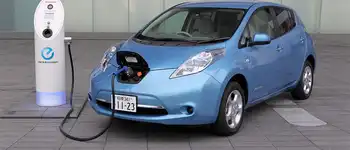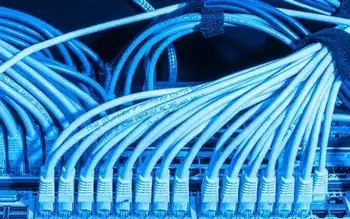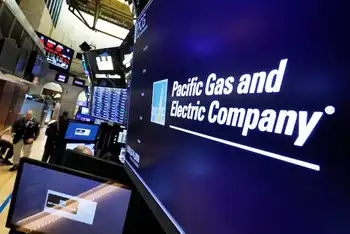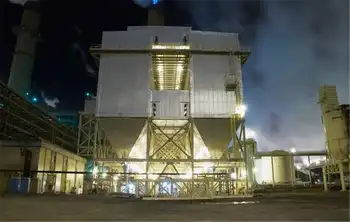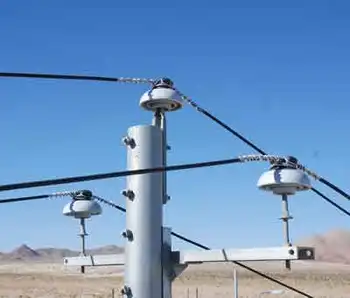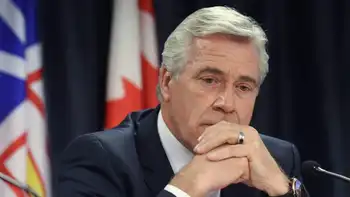Biden administration pushes to revitalize coal communities with clean energy projects

Substation Relay Protection Training
Our customized live online or in‑person group training can be delivered to your staff at your location.

- Live Online
- 12 hours Instructor-led
- Group Training Available
Coal-to-Clean Energy Hubs leverage Bipartisan Infrastructure Law and Inflation Reduction Act funding to repurpose mine lands with microgrids, advanced nuclear, carbon capture, and rare earth processing, boosting energy security, jobs, and grid modernization.
Key Points
They are federal projects converting coal communities and mine lands into clean energy hubs, repurposing infrastructure.
✅ DOE demos on mine lands: microgrids, nuclear, carbon capture.
✅ Funding from BIL, CHIPS and IRA targets energy communities.
✅ Rare earths from coal waste bolster EV supply chains.
The Biden administration is channeling hundreds of millions of dollars in clean energy funding from recent legislation into its efforts to turn coal communities into clean energy hubs, the White House said.
The administration gave an update on its push across agencies to kick-start projects nationwide with funding Congress approved during Biden’s first two years in office. The effort includes $450 million from the Bipartisan Infrastructure Law that the Department of Energy will allocate to an array of new clean energy demonstration projects on former mine lands.
“These projects could focus on a range of technologies from microgrids to advanced nuclear to power plans with carbon capture,” Energy Secretary Jennifer Granholm said on a call with reporters Monday. “They’ll prove out the potential to reactivate or repurpose existing infrastructure like transmission lines and substations across an aging U.S. power grid, and these projects could spur new economic development in these communities.”
Among the projects the White House highlighted, it said $16 million from the infrastructure law will go to the University of North Dakota and West Virginia University to create design studies for the first-ever full-scale refinery facility in the U.S. that could extract and separate rare earth elements and minerals from coal mine waste streams. The materials are critical for electric vehicle-battery components that are currently heavily sourced from outside the U.S.
“Those efforts will pave the way toward building a first of its kind facility that produces essential materials for solar panels, wind turbines, EVs and more while cleaning up polluted land and water and creating good-paying jobs for local workers,” Granholm said.
Biden created an interagency working group focused on revitalizing coal-power communities through federal investments when he took office. In 2021, the group selected 25 priority areas ranging from West Virginia to Wyoming to focus on development, as high natural gas prices strengthened the case for clean electricity. There are nearly 18,000 identified mine sites across 1.5 million acres in the United States, according to the White House.
The massive effort fits into a broader Biden administration push to both fight climate change and support communities that have lost economic activity during a transition away from fossil fuel sources such as coal. While Biden’s most ambitious clean energy plans fell flat in Congress in the face of opposition from Republicans and some Democrats after the previous administration’s power plant overhaul, three major laws still unlocked funding for his administration to deploy.
Many of the initiatives are made possible through the Bipartisan Infrastructure Law, Chips and Science Act and the Inflation Reduction Act, even without a clean electricity standard on the books. The task force aims to make sure communities most affected by the changing energy landscape are taking maximum advantage of the federal benefits.
“Those new and expanded operations are coming to energy communities and creating good paying jobs,” Biden’s senior advisor for clean energy innovation and implementation John Podesta said on the call. “These laws can provide substantial federal support to energy communities like capping abandoned oil and gas wells, extracting critical minerals, building battery factories and launching demonstration projects in carbon capture or green hydrogen.”
The administration touted the potential benefits of the Inflation Reduction Act, a bill passed by Democrats to spur clean energy investments last year, even as early assessments show mixed results to date. At the time, U.S. consumers were dealing with decades-high inflation fueled in part by an energy crisis and high gas prices that drove debate — a point Republicans emphasized as the plan moved through Congress.
Deputy Treasury Secretary Wally Adeyemo said the Inflation Reduction Act aims to both “lower the deficit, as well as promote our energy security, lowering energy costs for consumers and combatting climate change.”
“As the Treasury works to implement the law, we’re focused on ensuring that all Americans benefit from the growth of the clean energy economy, particularly those who live in communities that have been dependent on the energy sector for job for a long time,” Adeyemo told reporters. “Economic growth and productivity are higher when all communities are able to reach their full potential.”





